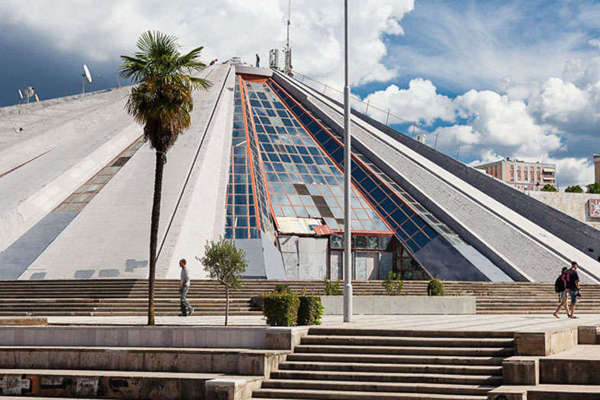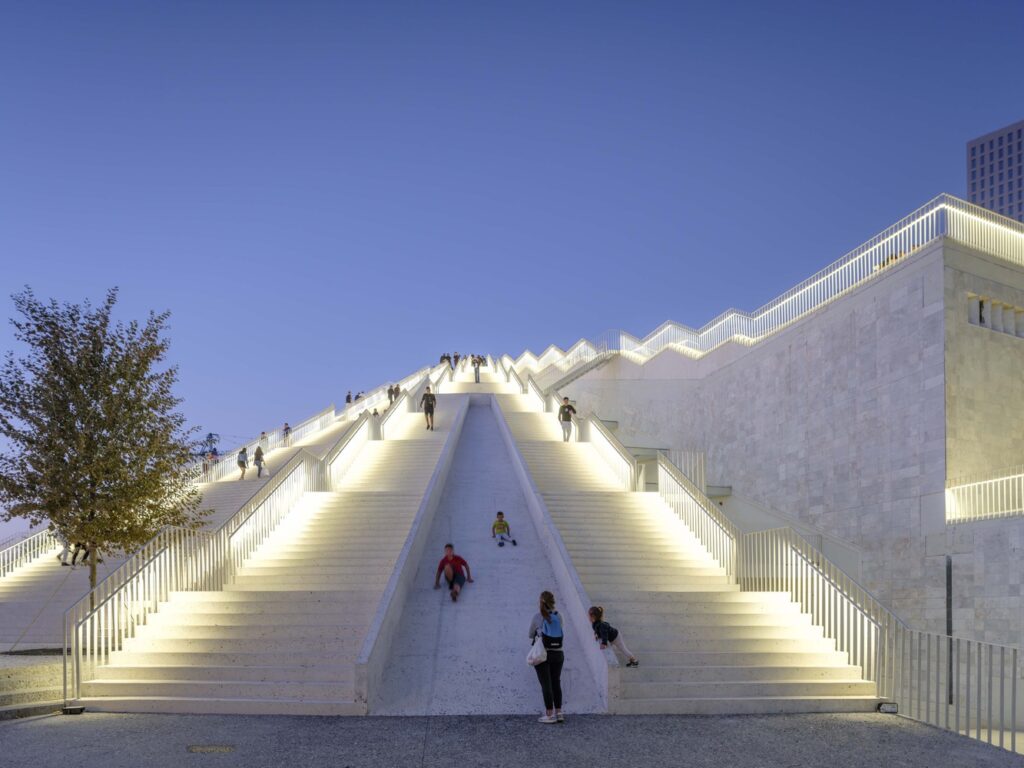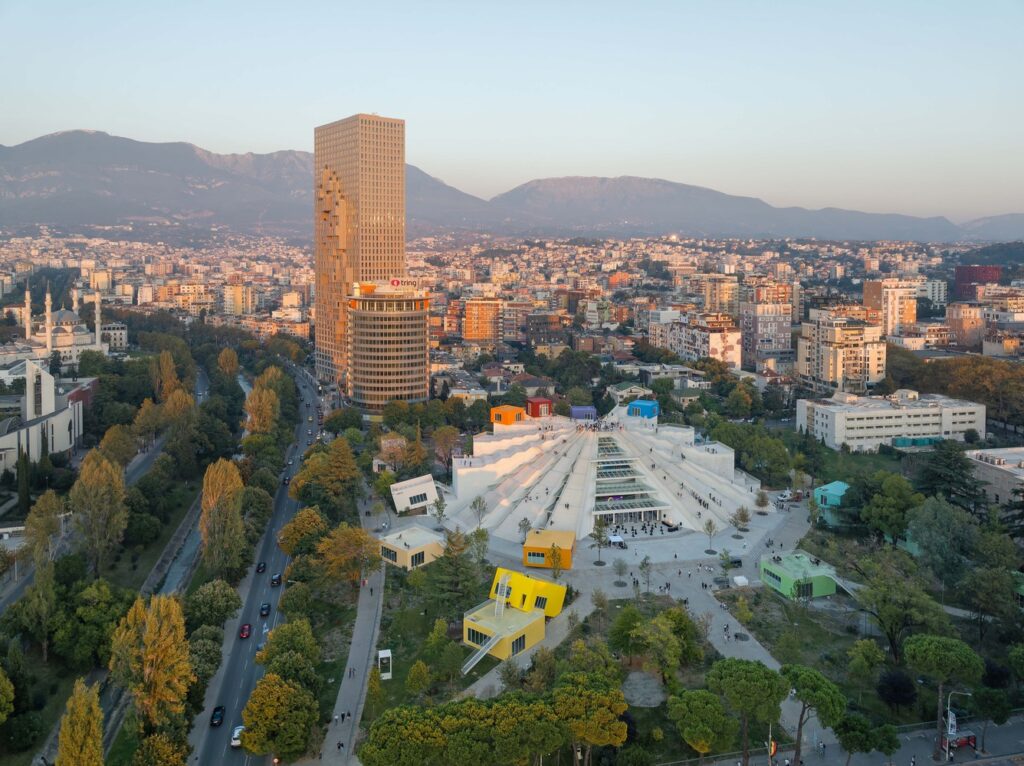The Revival of the Pyramid of Tirana
“The Pyramid… Once upon a time in the future!” is the new slogan, which means that now it’s the time to revive the building as the great cultural center,” – says Erion Veliaj, the Mayor of Tirana, during the re-opening ceremony of Pyramid.

Those who live in Tirana know that our city never sleeps. You can find all kinds of late bars, pubs, discos, karaoke, and live music for young people, and the Pyramid now will serve as a cultural center that will keep the city busy during the night.
The new design
The Pyramid maintained the name and the structure. Still, it turned into a massive park with an ensemble of colorful boxes scattered in and around the original building that now houses rooms for festivals and events, studios, start-up offices, incubators, bars, and restaurants. Some cubes will serve as meeting points and classrooms where Albanian youth will learn various technology subjects for free. Steps have been added to the building’s sloping façades, allowing the tourists and local citizens to walk all over the showpiece of the former dictator, see the view from the top, and take photos and videos. With an EU Summit and the official inauguration of the building as an accessible educational faculty for Albanian teens by TUMO on October 16, the Pyramid is officially giving back to the people. MVRDV architects designed the new structure, while AADF and Tirana Municipality funded it.
The History of Pyramid

The Pyramid has a contradictory history since it was built. It was inaugurated on October 14, 1988, as the mausoleum of the dictator, Enver Hoxha. The pyramid shape was designed by a group of architects led by the dictator’s daughter and son-in-law. Construction began in 1986 and ended in 1988. It did indeed serve as a mausoleum for Hoxha until 1991, after which it became a conference and fair center. As a symbol of notorious communism, it resisted some attempts to be destroyed by previous governments. It was used also as a NATO base during the 1999 War in Kosovo. For many years, it was known as the Pjeter Arbnori International Cultural Centre, used as a conference and fair venue, broadcasting center, etc. Despite the attempts to destroy this building, most Albanians were against that demolition. It stood out as a remarkable piece of architecture and a legacy of communism. The building has always attracted tourists worldwide, even though they just photographed the outside building without the chance to enter inside. Children used it to climb on the top of it.

The new design kept that part as a climbing place to somehow show new generations’ triumph against the dictatorships. Albanians can return objects of dark history in use. For us, it is easy to forgive because we are more focused on leaving “the Today” and looking forward to the future. We are optimistic people.

Other News to Read
Alessandro from Italy: My unforgettable experience in Tirana
As for the city of Tirana, it was truly stunning and filled with surprises.